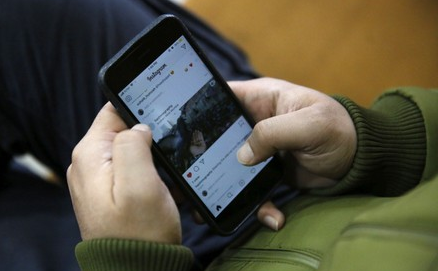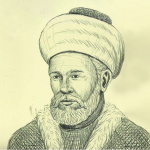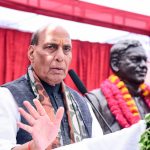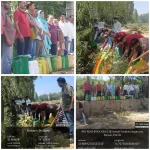TORN REALITIES
The youth of Kashmir find themselves caught in a paradox that grows more intense with each passing day. On one hand, they are drawn to the fast-paced, glittering world of technology—smartphones, social media, virtual classrooms, artificial intelligence, and global connectivity—while on the other, they carry the weight of centuries-old traditions, cultural heritage, and the soulful yet sobering history of their homeland. This friction between two divergent forces creates a psychological and emotional terrain that is not only complex but also deeply reflective of the larger transitions underway in Kashmir.
Growing up in the Valley, the Kashmiri youth experience life under a sky laden with contradiction. The call to prayer from a nearby mosque may coincide with a notification beep from Instagram or Snapchat. A family evening may start with a discussion about a local shrine or a folk tale told by an elder and end with silent scrolling through reels and memes. This simultaneous co-existence of two worlds is not unique to Kashmir, but the context of a politically volatile, emotionally fragile, and historically rich region adds a deeper layer of intensity.
The allure of technology is both liberating and alienating. It connects young Kashmiris to the outside world, gives them access to education, employment opportunities, digital expression, and even resistance. Many have used platforms like YouTube, Facebook, and X to voice their opinions, share their art, showcase talent, or highlight grievances. Coding, graphic design, digital marketing, and content creation are becoming new-age career paths. Virtual learning during shutdowns and pandemics offered many a window to escape isolation, even if temporarily.
But with every technological leap, there is a silent retreat from tradition. The Kashmiri language, for instance, is in slow decline. Conversations in many homes are shifting to Urdu, Hindi, or English, especially among children and teenagers. Cultural practices, folk songs, rituals, and oral histories are either selectively remembered or conveniently forgotten.
Young minds, while deeply aware of their identity, often struggle to articulate it in a manner that resonates with both their elders and their peers outside Kashmir. They are Kashmiri in heart but global in their habits. This dichotomy fosters a subtle disconnection—one that is neither rebellion nor indifference but something far more complicated.
This generation has inherited trauma—of militancy, of forced silence, of curfews and crackdowns. At the same time, they are expected to embrace change, compete in national-level exams, bag multinational jobs, and represent Kashmir in a world that often views their homeland through a narrow political prism. The burden is immense. Their expressions—be it in art, poetry, rap, or photography—carry the undertone of this burden. A mobile phone in their hand is not just a gadget; it’s a window to freedom, but also a screen through which they often experience pain, alienation, and longing.
Tradition in Kashmir is not merely about rituals or clothing. It is deeply woven into the rhythm of life—how tea is prepared and served, how weddings are celebrated, how elders are respected, and how grief is shared communally. Even in the culinary habits, there lies an identity that resists globalization.
Yet, young Kashmiris are slowly drifting toward fast food culture, Western fashion, and the aesthetics of pop trends. While this is a natural outcome of global exposure, it sometimes leaves behind an identity crisis, particularly when the older generation views such shifts with suspicion or disdain.
The communication gap between generations widens when elders fail to understand the digital evolution, and the youth feel suffocated by traditional expectations. Many families still expect the younger lot to follow set norms—arranged marriages, religious commitments, family-run businesses—while the youth dream of startups, creative professions, solo travel, and personal freedom. This clash often creates silent rifts, invisible emotional walls that can only be bridged through empathy, dialogue, and time.
Interestingly, some young Kashmiris are now trying to strike a balance. There are influencers who speak in Kashmiri on social media, poets who recite verses in traditional meters while filming in HD, chefs who present ‘wazwan’ on YouTube with subtitles, and artists who mix calligraphy with digital design. This hybridization, though nascent, suggests that the story is not one of erosion but of evolution. The youth are not discarding tradition; they are reimagining it. They are not always running away from the past, but rather, carrying it in new forms—wearing pherans in stylized ways, remixing folk tunes with modern beats, or quoting Rumi in Instagram captions.
The role of education cannot be overlooked in this transition. Many Kashmiri students studying outside the Valley come back with changed worldviews. They return with new questions about identity, belonging, and purpose. Some find themselves misunderstood; others become bridges between two worlds. Their experiences underline the importance of creating educational environments that nurture both intellect and identity. The challenge is to produce not just informed individuals but rooted human beings—those who can code in Python and also recite a couplet of Mahjoor or Rahman Rahi.
There is also a spiritual undercurrent in this entire discourse. Kashmir’s soul lies in its Sufi and Shaivite traditions—traditions that emphasized inner peace, harmony, and unity. But today’s youth, trapped in hyper-competitive systems and the endless scroll of digital media, often feel spiritually depleted.
The age-old questions of “Who am I?” and “What is my role?” resurface in strange ways—through mental health issues, existential crises, or deep yearning for a meaning that neither TikTok nor textbooks can offer. The resurgence of interest in mystic poetry, spiritual gatherings, or even casual visits to shrines indicates a subconscious return to roots, a craving for solace that technology cannot fulfill.
In essence, the youth of Kashmir are not lost; they are searching. Their rebellion is not against tradition, but against rigidity. Their embrace of technology is not an abandonment of roots, but a reaching out—for freedom, for expression, for a sense of relevance in a rapidly changing world. It is time for society to recognize their struggle not as a problem but as a process. The real challenge lies not in preventing the youth from changing but in guiding them to change wisely, with awareness and dignity.
Let tradition be a foundation, not a cage. Let technology be a tool, not a trap. And let the youth of Kashmir walk this tightrope with the balance that comes not from denial but from discernment. For in their journey lies the future of a place that has for centuries known both suffering and resilience, silence and poetry, shadow and light.
(Author is RK columnist and can be reached at: [email protected])








